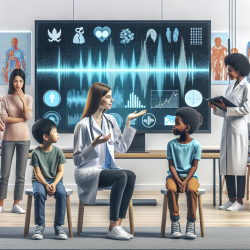As a Special Education Director overseeing the implementation of effective speech therapy services, staying informed about the latest research is crucial. One such resource, "Speech After Stroke: A Manual for the Speech Pathologist and the Family Member" by Stephanie Stryker, provides valuable insights for practitioners working with aphasic patients. This blog explores key takeaways from the manual and how you can integrate them into your practice to enhance speech recovery outcomes.
Key Insights from "Speech After Stroke"
The manual is designed to offer structured practice material for speech pathologists and family members to help aphasic patients regain language and speech skills. The content is divided into five sections, each focusing on different aspects of speech therapy:
- Comprehension of the Spoken Word: Techniques include following commands, pointing to objects, and using gestures.
- Imitative Ability and Articulation Drills: Exercises for strengthening oral musculature and practicing repetition.
- Vocabulary Recall, Grammar, and Syntax: Tasks for sentence completion, grammar usage, and word order drills.
- Reading Development Skills: Exercises for comprehension of written material and oral reading.
- Writing Development Skills: Activities for copying, writing to dictation, and writing from memory.
Implementing Research Outcomes in Practice
Here are several ways you can implement the outcomes of Stryker's research to improve your practice:
1. Customized Therapy Plans
The manual emphasizes the importance of customizing therapy plans to suit the individual needs of each patient. While the provided exercises are comprehensive, they should be adapted to meet the specific challenges and progress of the patient. This tailored approach ensures that therapy is both effective and engaging.
2. Family Involvement
Stryker highlights the role of family members in the therapy process. Encouraging family involvement can significantly enhance the patient's progress by providing additional practice and support outside of clinical sessions. Educate family members on how to use the manual's exercises effectively.
3. Multi-faceted Approach
The manual's division into sections covering comprehension, articulation, vocabulary, reading, and writing underscores the need for a holistic approach to speech therapy. Ensure that your therapy sessions incorporate a variety of exercises targeting different aspects of speech and language recovery.
4. Continuous Learning and Adaptation
While the manual provides a robust foundation, staying updated with current research and methodologies is crucial. Participate in conferences, webinars, and professional networks to continuously refine your skills and knowledge.
Encouraging Further Research
While "Speech After Stroke" offers valuable guidance, the field of speech pathology is ever-evolving. Practitioners should be encouraged to engage in further research to stay abreast of new techniques and therapies. By integrating ongoing research into your practice, you can offer the most effective and up-to-date treatments for your patients.
To read the original research paper, please follow this link: Speech After Stroke: A Manual for the Speech Pathologist and the Family Member










